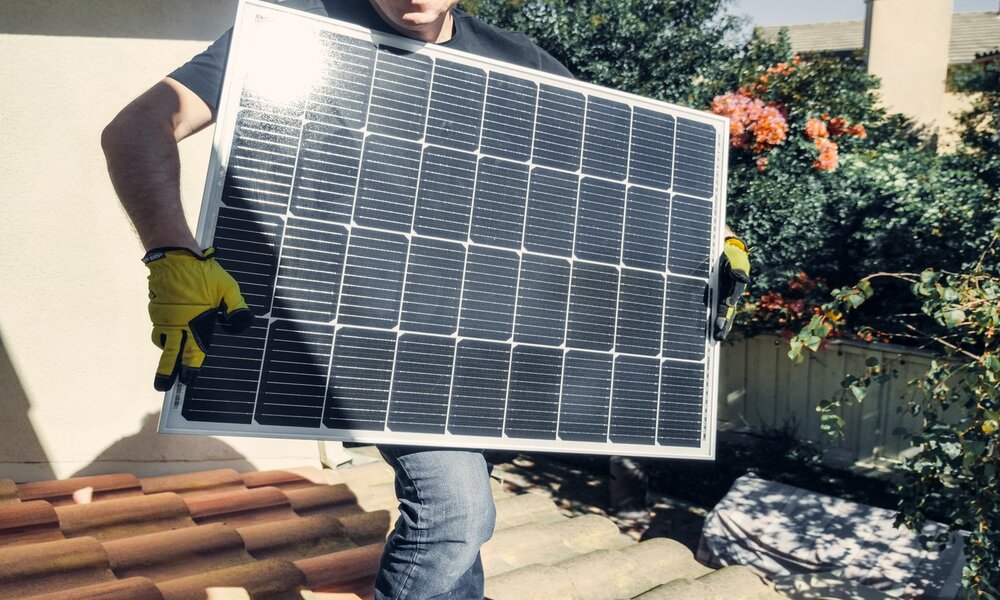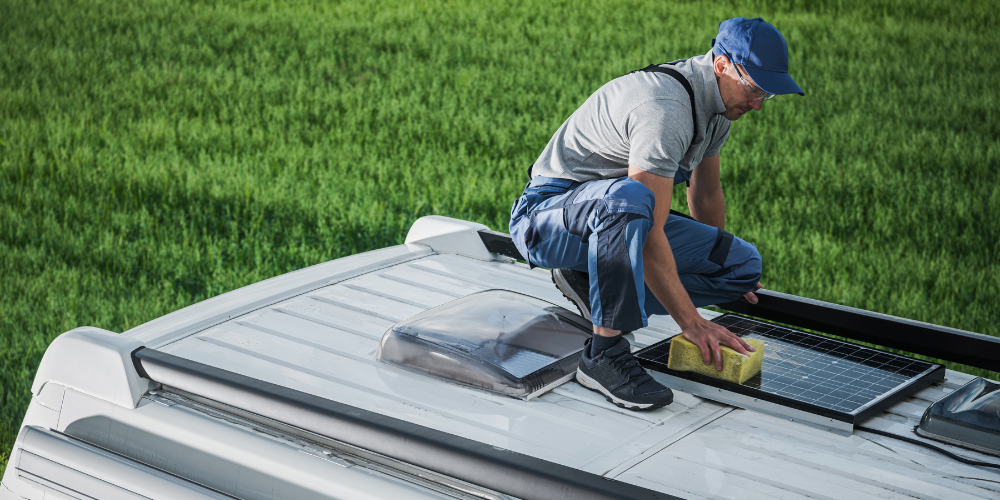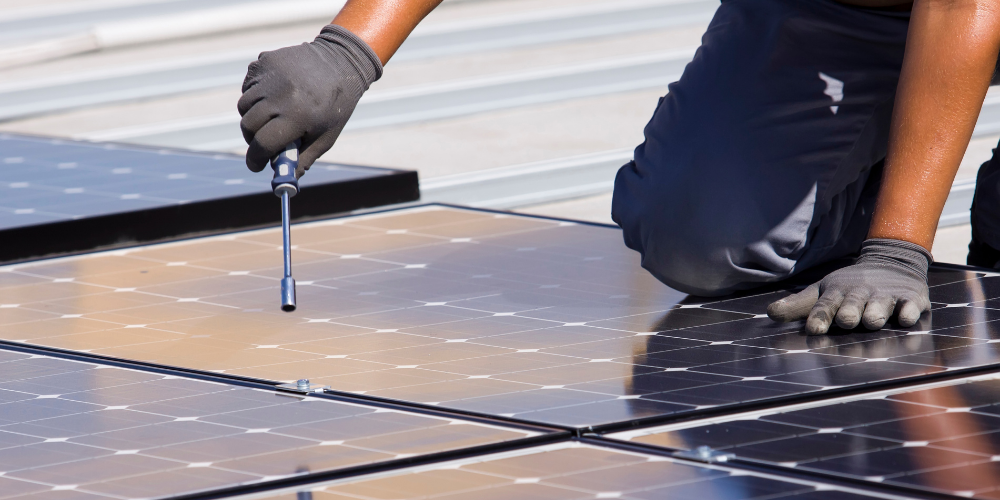How Many Amps Does A 25 Watt Solar Panel Produce?

A 25-watt solar panel may not seem like much, but even small solar panels can capture enough solar power to charge a battery in a day or less, depending on the battery capacity. Your 25-watt solar panel is perfect as a source of portable solar power, capable of recharging your battery bank during the day for use at night. Read on to learn more about a small solar panel and how much solar power it can provide.
25-Watt Solar Panel
A 25-watt solar panel may not be able to power large appliances, but it is far from useless. It usually comes in ~20 inches X ~14 inch and is less than 7lbs heavy. This means your 25-watt solar panel is very portable. In some cases, you may also be able to purchase a flexible, semi-flexible, or foldable 25-watt solar panel that is even easier to carry. With the optimum operating voltage of 17.5 V and optimum operating current of 1.43 A, it is a perfect device for recharging your battery bank and reducing your small-appliance energy usage.
Your solar panel can charge batteries with renewable energy directly instead of connecting devices to it. With a voltage regulator and a good solar charge controller, you can charge your lead-acid batteries and other deep-cycle batteries with solar energy and use them later on. The size of the battery depends on your energy needs, but how long it would take for your batteries to be fully charged depends on the size and solar panel maximum power output.
Specifications of 25-Watt Solar Panel
If you are browsing the market for small solar panels to use to recharge your lead-acid batteries or lithium-ion batteries, you may notice there are many different solar panel models. Choosing the best one and comparing their specs to suit your needs can take a lot of time, so we researched the market in search of popular solar panels you may use in your RV, cabin or on the hike. Here are the specs (electrical and mechanical) of the five most popular solar panels that you can buy today.
| Electrical Specs | Acopower 25-watt polycrystalline module | ECO-WORTHY 25W Solar Panel | SunJack 25 Watt Monocrystalline Solar Panel | MOOLSUN 25W Solar Panel Power | Topsolar 20W solar panel |
|---|---|---|---|---|---|
| Maximum Power | 25 W | 25 W | 25 W | 25 W | 25 W |
| Maximum System Voltage | 18 V | 18 V | Two 5V/2A USB-A ports | 18 V | 18 V |
| Open-Circuit Voltage | 22V | 22.4V | N/A | 21.6V | N/A |
| Optimum Operating Voltage | 17.5V | 12V | 5V | 5.5A | 12V |
| Optimum Operating Current | 1.43A | 1.11A | 2 X 2A | 3A | 1.11A |
| Short-Circuit Current | 1.54A | 1.4A | N/A | N/A | N/A |
Here’s are the mechanical specifications of this solar panel kit.
| Mechanical Specs | Acopower 25-watt polycrystalline module | ECO-WORTHY 25W Solar Panel | SunJack 25 Watt Monocrystalline Solar Panel | MOOLSUN 25W Solar Panel Power | Topsolar 20W solar panel |
|---|---|---|---|---|---|
| Weight | 7.05 lbs | 4.54 lbs | 3.0 lbs | 5.84 lbs | 4.8 lbs |
| Dimensions | 20.1 x 14.2 x 0.8 in | 16.5 x 12.6 x 0.67 in | 24.5 x 12.5 x 1 in | 25 x 13.78 x 1 in | 17.13 x 13.86 x 2.32 in |
| Material | Polycrystalline | Monocrystalline | Monocrystalline | Monocrystalline | Monocrystalline |
| Flexibility | Non-Flexible | Non-Flexible | Foldable | Non-Flexible | Flexible |
| Warranty | 5 year warranty | N/A | 1 year warranty | N/A | N/A |
Related Terminologies
Understanding the terminology used in the table can be confusing, so here is a breakdown of the terms we’ve used in the table:
Maximum Power – This is the most solar energy your solar panels can produce in a given hour, under ideal conditions of direct sunlight coming to the panel at a 90-degree angle.
Maximum System Voltage – the maximum measurable voltage between any two conductors or a conductor and the ground. It is usually higher than the specified optimum voltage, as the conditions may not always be ideal for optimum voltage to be reached if it was equal to the maximum voltage.
Open-Circuit Voltage – the maximum voltage a single solar cell can develop if there is no current in the panel.
Optimum Operating Voltage – this is the voltage your solar panel will operate at most of the time, under ideal conditions.
Optimum Operating Current – the current (in Amps) that your solar panel can produce in ideal conditions to power your devices.
Short-Circuit Current – the current the solar panel can develop with no load on it and when it is short-circuited.
What Can I Power With A 25-Watt Solar Panel?

There are many applications small solar panels can take on. Depending on how much energy you need, you may use your solar panel for:
- Courtyard lighting,
- Caravan, RV, boat, a small cabin with low-voltage power (with a good voltage regulator),
- Greenhouse lighting for better crop yield and shorter growth period,
- A low-voltage lighting system for your house (think LED lights),
- As a source of portable solar power when hiking or spending time in places with no power grid available, and
- They can be used to reduce your average electricity consumption.
RV
Your RV or a Recreational Vehicle can be powered in part by a 25-watt system. If you have no need for a heating or a water-heating system, you can use your 25-watt solar panel to charge deep-cycle batteries and then use them for lights, a small TV, a water pump, or even a fridge. This reduces your fuel consumption, as your solar panels generate electricity you would normally get through a power generator.
Street Lights
In many cities, as a part of their zero-emissions goals, solar street lights are being installed. These smart street lights can be grid-tied installations that generate electricity during the day and use them at night. They save money for the cities and reduce pollution at the same time.
Small Cabin
A small cabin can also be powered via a solar panel and a solar charge controller. Add a battery pack, and you’ve got yourself a hefty way to save electricity and use it when you need it. A fridge, a TV, a set of low-voltage lights, and a small water pump can all be powered with solar power, depending on how many panels you have installed and the battery capacity.
Boat
If you properly size your solar panels, your lead-acid battery, your solar charge controller, and the solar inverter, you may also be able to power some electronics in your boat. Although no size solar panel is enough to propel your boat, your lights and the fridge can run on solar power smoothly and efficiently. Always have a source of backup power, as, during a longer period of cloudy days, your 25-watt solar panels will lose most of their power output.
How Does A 25-Watt Solar Panel Work?
Your 25-watt solar panel works in the same way that other size solar panels do. When exposed to direct sunlight, solar cells in your panel use photons from the sunlight to excite electrons and make them move. This is direct current. Your solar inverter then kicks in: this is a great tool that converts direct current to alternating current that it uses to power your batteries or appliances.
How To Know Your Solar Needs?
If you try to understand your solar needs, you may be in a problem. Knowing exactly how much power your appliances use is not an issue, but for how long you use them every day can be. The difference between the nominal power and the effective power used is another issue that is difficult to calculate, as everyone’s needs are just so different.
The best thing to do is to monitor your battery levels every day. See how much solar power was delivered to your batteries and how much energy you’ve used on any given day. Depending on the capacity, your batteries may not even be able to last you a single day, while some may last several. Once you know how much energy you draw from your batteries (based on your measurements over a period of several days), you’ll know your total energy use.
Understanding Your Solar Panel’s Capacity
Every solar panel has a certain capacity that it cannot exceed. When calculating your energy use and converting it to the solar panel capacity you need, it is always a safe bet to increase the necessary capacity by at least 10%. This will give you that extra power and battery capacity you may so desperately need during cloudy days.
Knowing The Actual Solar Power Generated
To calculate the actual solar power generated, you need to know the maximum output of your solar panels. This is easy: the maximum output of your 25-watt solar panel is 25-watts for every hour of sunlight. As the US receives an average of six sunny hours a day, this translates to 150 watt-hours of solar power on an average day.
Knowing Your Energy Usage
Knowing your energy usage is difficult to estimate, as we’ve seen before. However, if you want the sun to power your cabin or your RV, doing the calculation is actually easy: just take a look at the few appliances and lights you may have and pay attention to their power consumption. Your devices vary depending on the work they do. Lights generally consume less power than a TV, which again uses less power than a toaster. A 7-watt LED light can run 21 hours with a 25-watt solar panel and six hours of sunlight.
Match Your Energy Usage and The Generated Solar Power
If you want to go full solar, it is best to buy as many solar panels as you need to cover 100% of your normal daily use of solar power. This means that you should sum up the energy used by your appliances to determine how much power they need in a day and then buy as many panels as you need to address those needs. If you live in a house and are connected to the power grid, for example, you can see your total monthly use on your electricity bill.
Pros and Cons of A 25-Watt Solar Module
There are both pros and cons of using a small solar panel to power charge your batteries or to power your devices. Read on to learn exactly what these are. Here are some pros of a 25-watt solar module:
- Great performance in good sun,
- The ease of placement due to a small size,
- Optimized voltage for 12V power systems,
- Lightweight and portable.
Here are the cons of a small solar panel:
- Only 25-watts – very limited usage,
- High cost per watt of power produced when compared to large solar panels,
- Has no blocking diode installed,
- Has no solar charge controller,
- Requires additional solar inverter.
Can You Connect 25-Watt Panels Together?

You can connect as many 25-watt panels as you would like. If you want to create a custom solar array for your energy needs, it is important to let an expert connect the panels for you. Knowing the right solar charge controller and solar inverter, as well as the right way to wire the panels together, is of utmost importance for the safety of your solar system.
FAQs
How Much Power Does A 25-Watt Solar Panel Produce?
A 25-watt solar panel can produce 150 watt-hours in a six-hour period. Likewise, a 50-watt panel can produce 300 watt-hours of usable electricity in a single day. The energy generated increases with the length of the day, so you can expect to produce more power during summer than in the winter.
How Long Does It Take A 25-Watt Solar Panel To Charge A 12V Battery?
How long it takes for a 25-watt panel to charge a 12 V battery depends on the battery capacity. As a 25-watt panel produces 25 watts at 12 V, this translates to around 2 Amps of power to store. With 6 hours of sunlight, it takes that amount of time for your panel to charge a 12 V, 12 Amps battery.
How Many Amps Is A 25 Watt Solar Panel?
To understand how many amps your 25-watt panel produces, follow this equation:
Maximum panel power output / voltage = amps
25 watts / 12 V = 2.08 Amps
So, a 25-watt solar panel can produce ~2 Amps of power.
Does A 25 Watt Solar Panel Need A Charge Controller?
Yes, you need a charge controller for your 25-watt panel. Charge controllers are there to even out any spikes in electricity production. They also protect your solar battery and prolong its life. If you are not certain about what charge controller you may need, ask an expert for help. Choosing the wrong controller can irreversibly damage your battery pack.
Is It Worth It?
Although a 25-watt solar panel may seem very small, it is still powerful enough to provide some power for your lead-acid battery or other batteries you may have installed as your solar power pack. Properly wiring the solar panel to the inverter and the charge controller will give you the energy to run some efficient appliances, such as LED lights, a small water pump, or even a toaster. A 25-watt solar panel is a perfect solution for most off-grid applications, as it can save money and increase the efficiency of your cabin, RV, or your boat.
Updated on
